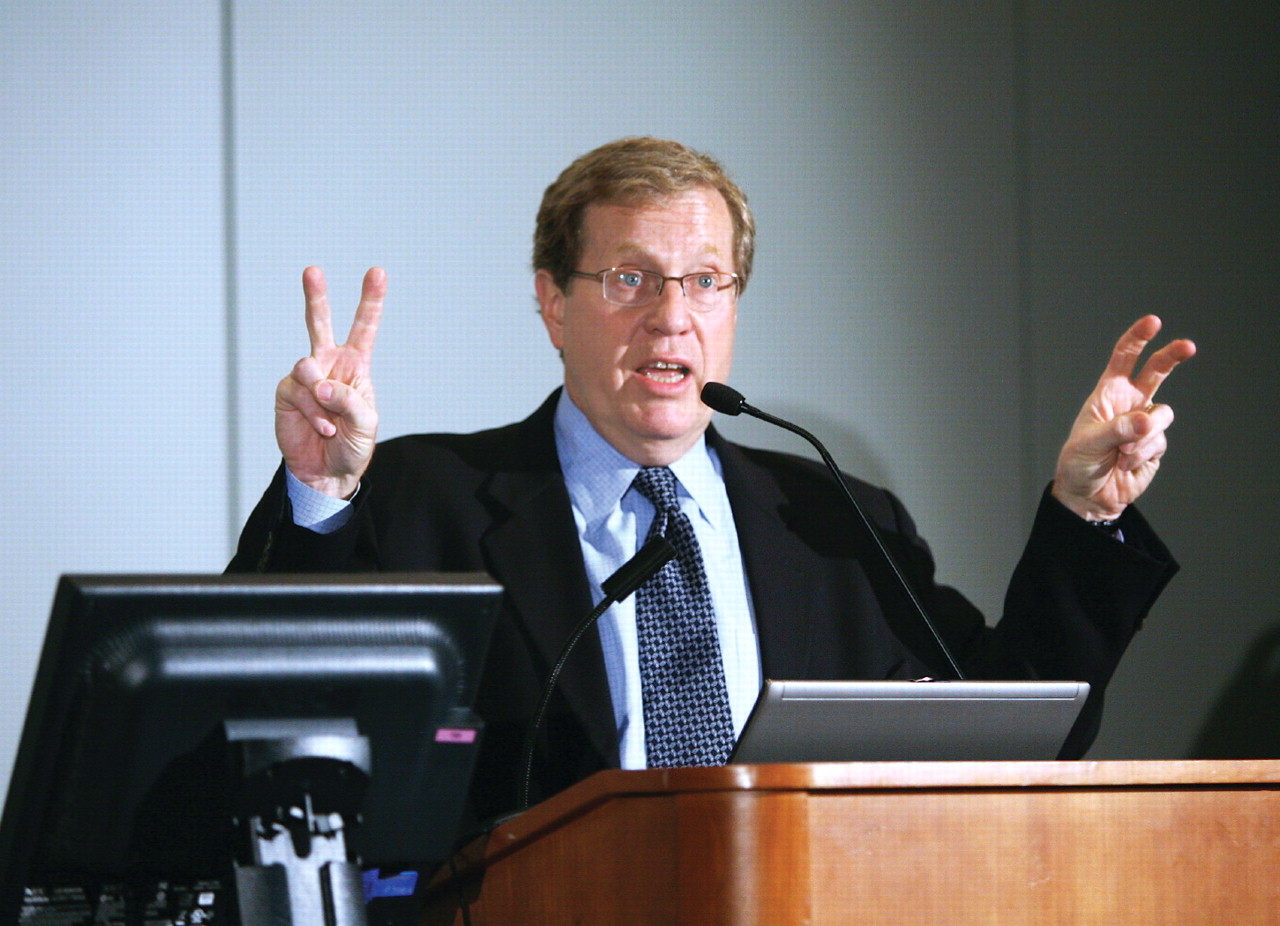Two common psychiatric disorders are frequently overlooked in children and adolescents by psychiatrists and mental health professionals who may be focused on higher-profile conditions, according to child psychiatrists.
Depressive symptoms, in particular, are common in pediatric practices, said Jefferson Prince, M.D., director of child psychiatry at North Shore Medical Center in Massachusetts and an instructor in psychiatry at Harvard Medical School. Some research has found that up to 10 percent of patients seen on routine follow-up by pediatricians displayed symptoms of depression. He made his comments at a session on pediatric psychopharmacology, which was part of a Presidential Institute organized by APA and the American Academy of Child and Adolescent Psychiatry at APA's 2008 annual meeting in Washington, D.C., in May.
Despite the prevalence of pediatric depression, however, it frequently goes undiagnosed because psychiatrists and other physicians are not looking for the right symptoms. Prince said physicians as well as mental health professionals need to look for dysphoria and irritability, instead of the sadness seen in adult depression patients.
“There may be sadness that comes with it, but primarily we see irritability,” he pointed out.
These young patients, who often can't see the problem as stemming from themselves, are sensitive to rejection and can't sustain happiness. The condition also is marked by abnormal sleep patterns, changes in appetite, and suicidal ideation.
A genetic predisposition to depression may be brought out by stressful situations, from which healthy children could recover by themselves. But in these children, stress often leads to depression.
In pediatric depression patients, the depression is a chronic condition that parents often initially attempt to address themselves. Patients brought to him for treatment, Prince said, are usually well into their second or even later depressive episode.
Comorbidity a Challenge
He noted that pediatric depression is a highly comorbid condition, which may make it harder to recognize because it is obscured by conditions that are sometimes easier to detect, such as anxiety. A further diagnostic complication is that about half of younger pediatric depression patients thought to have unipolar depression are later diagnosed as having bipolar depression.
Despite the challenges, treatment for pediatric depression is critical because of the demonstrated toxic effects of depression on the brain.
One of the leading challenges to medical treatment for pediatric depression is the Food and Drug Administration's label warnings about the risk of suicide in individuals younger than 25 who take antidepressant medications.
While Prince challenged the accuracy of the studies on which those warnings are based, the one positive aspect of the warnings is that they spur conversations about a sensitive topic that is difficult for psychiatrists to discuss with parents and youth, he said.
Because the time of highest suicide risk once medication is begun is during the first nine days, Prince urged psychiatrists to follow their pediatric patients closely during this time. “So during this time we want to make sure that people are aware that we are changing things in them and that if it goes in the wrong direction, we need to know that,” Prince said.
One way to address the suicide risk directly is to ask parents if they have a gun in the home, and if they are gun owners, educate them about the risks when someone in the home has depression. Psychiatrists also should rehearse a“ safety plan” with young patients that reviews dangers in their lifestyle and whether they have a proper diet and sufficient sleep.
“I tell them 'no marijuana,'” he said. “That is an extraordinarily important intervention.”
Anxiety Often Overlooked
Psychiatrists also frequently miss pediatric anxiety disorder, the symptoms of which are among the easiest to detect, said John Walkup, M.D., deputy director of the Division of Child and Adolescent Psychiatry at Johns Hopkins Medical Institutions.
He noted that anxieties are highly comorbid and overlap heavily. Research indicates that 70 percent of patients with a phobia have another anxiety disorder.
Anxiety disorders have a range of symptoms but some of the most common are chest pains, an urge to urinate before stressful events, a constant lump in the throat, difficulty swallowing foods, dizziness, and exhaustion.
“So if you have kids who are consistently irritable and exhausted when they get home from school, these are children who [may be] tired from managing their anxiety all day,” Walkup said.
Although anxiety disorders are often underdiagnosed and discounted as“ not meaningful,” he said, they are “quite impairing” and should not be minimized. And the burden to urge treatment for these conditions frequently falls on psychiatrists and other clinicians because educators and school counselors are so used to seeing symptoms of anxiety that they often don't see the need to push parents to get their child treated.
To treat children with anxiety disorders, he uses SSRIs first because they are easier to use than other medication options, and kids respond to“ more reasonable doses.” Many children with anxiety are treated with benzodiazepines, but, he warned, long-term efficacy data in this population are lacking for those drugs.
The length of treatment is based on patients achieving a lasting“ recalibration of how they think of themselves.” Then, he suggested, pick a time of year when a relapse would have the least impact on the child and slowly taper off the medication. He urged clinicians to watch patients closely for complications or relapses for at least a year after they stop taking medication. ▪

